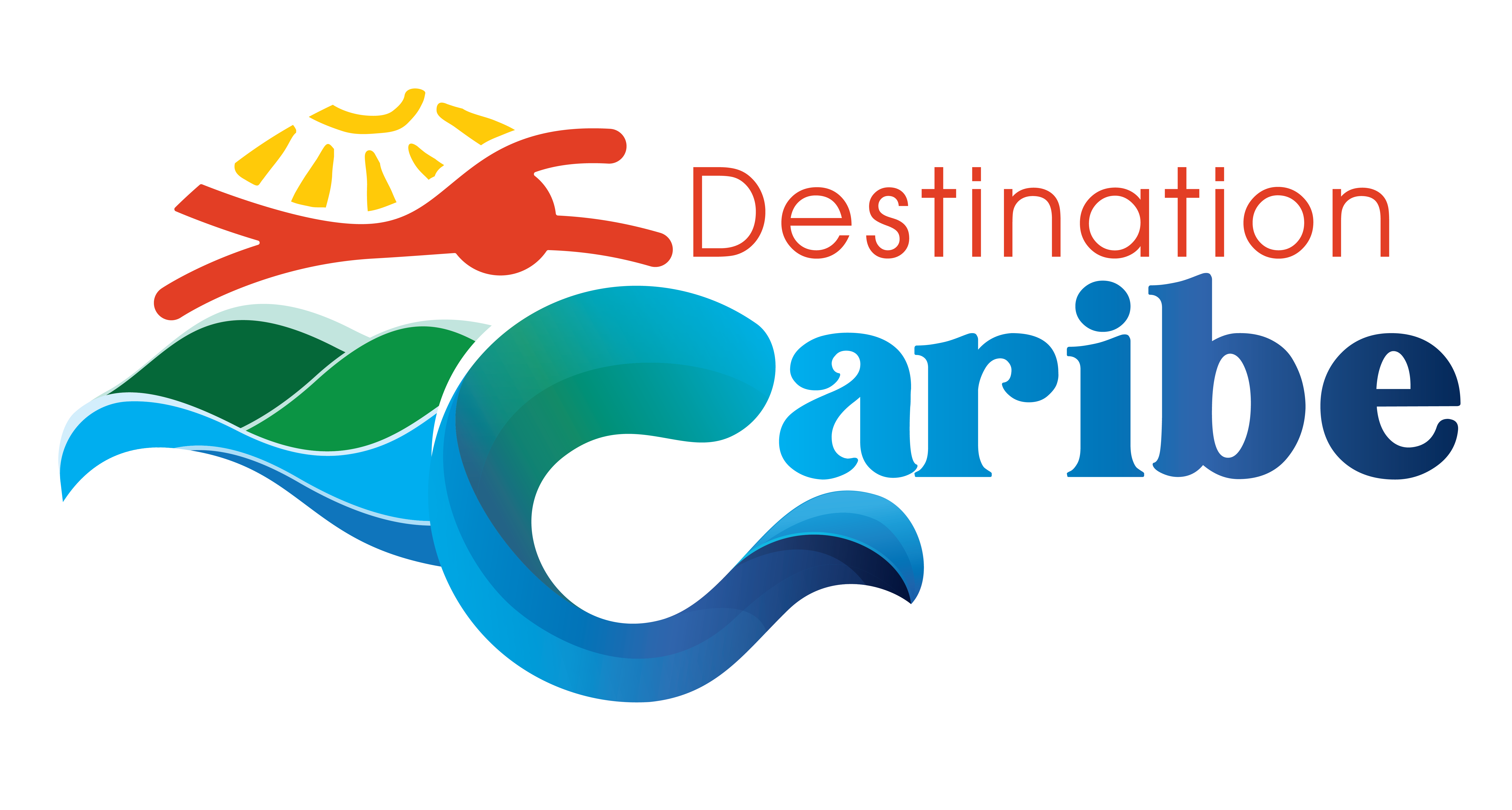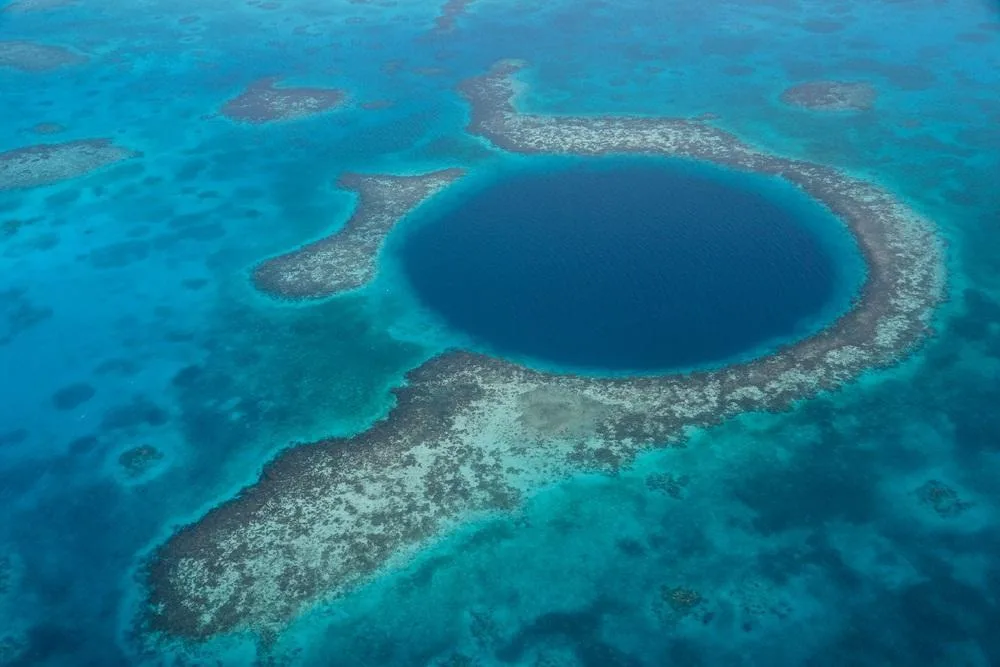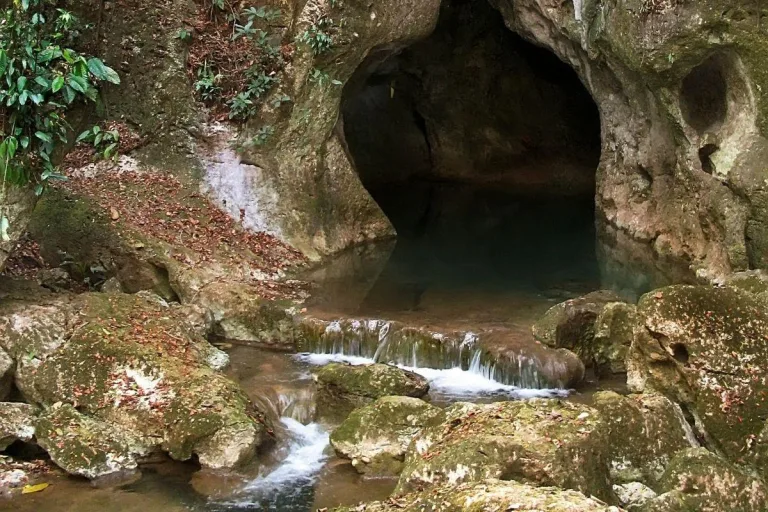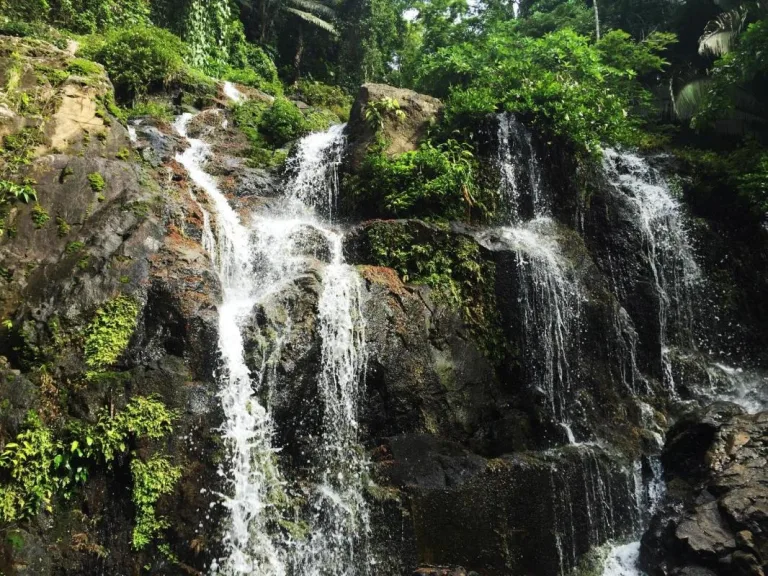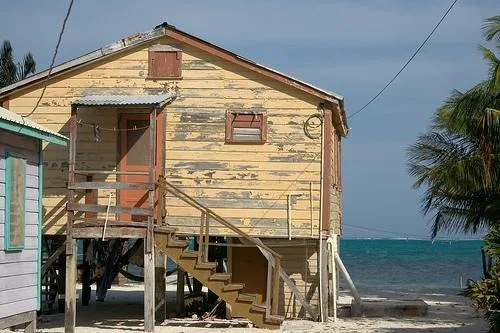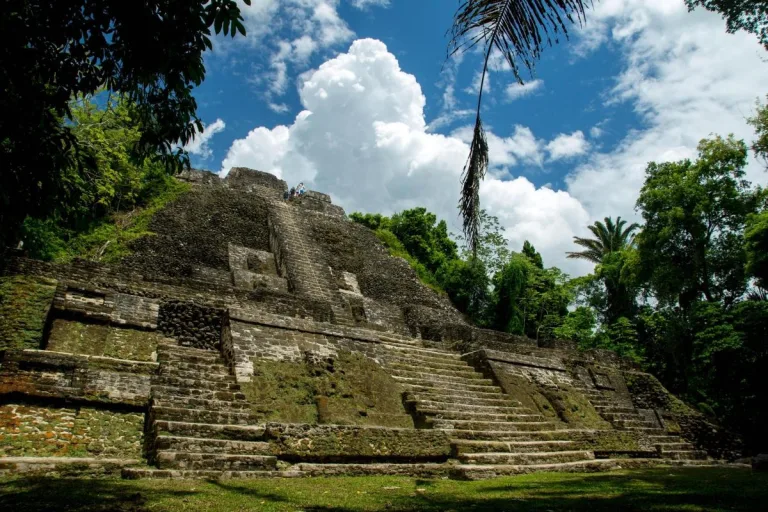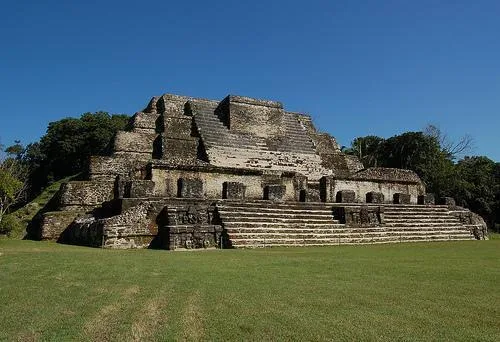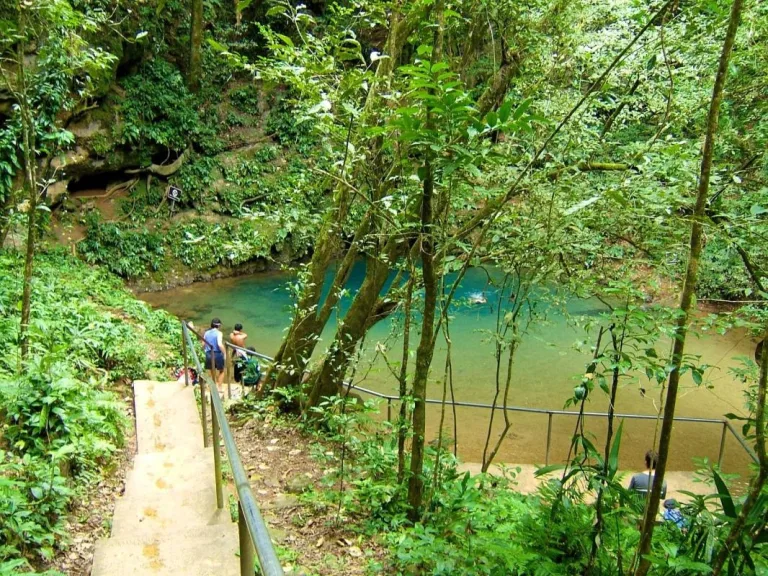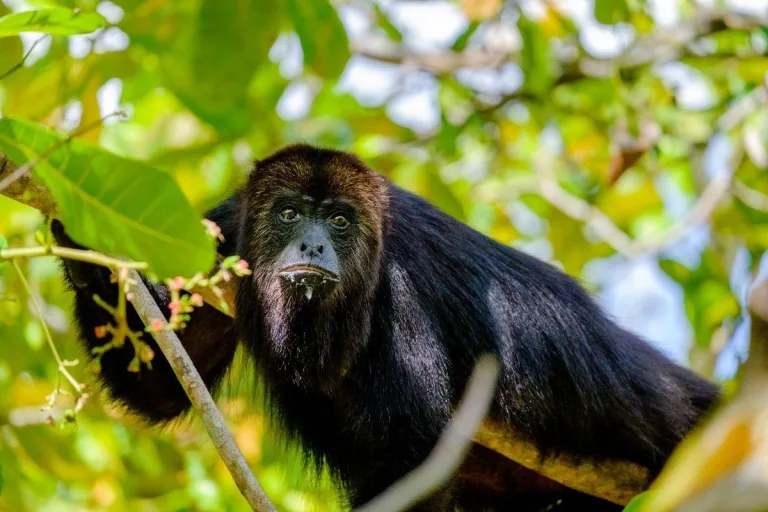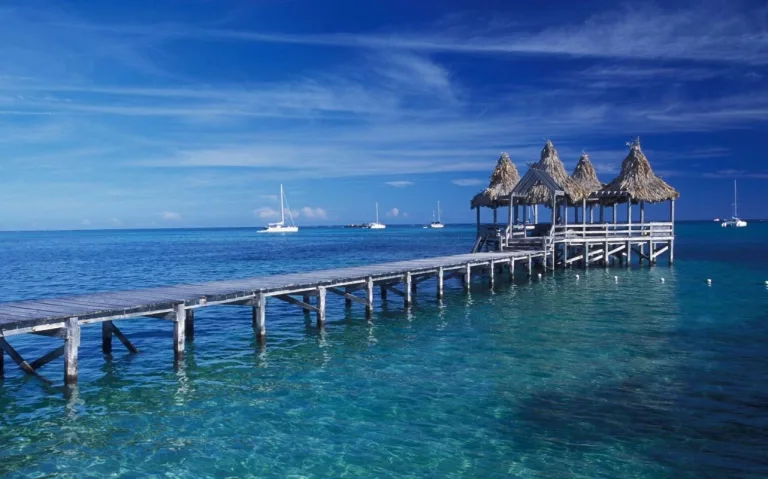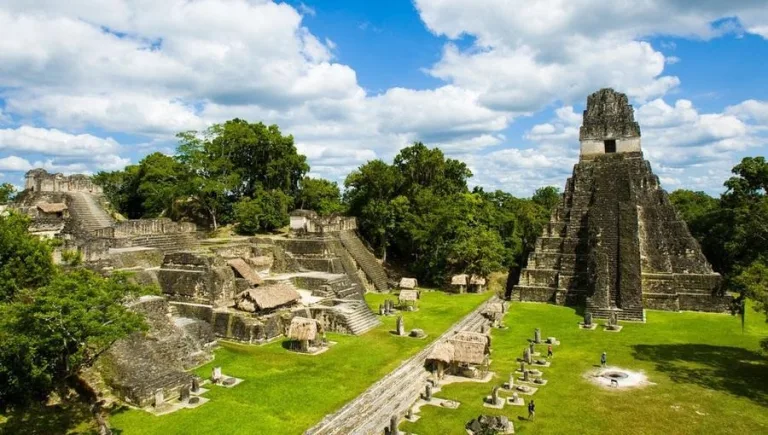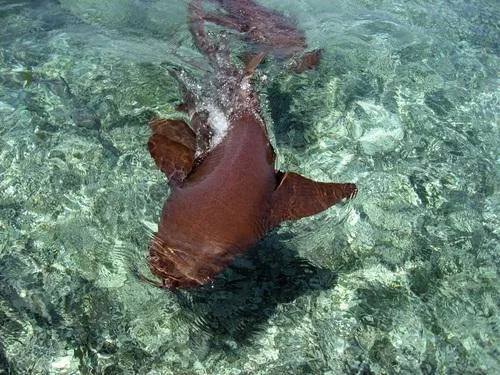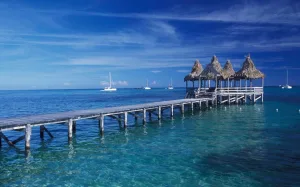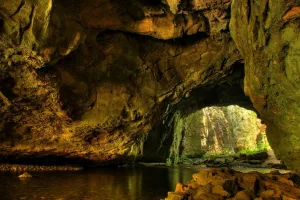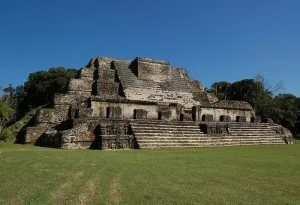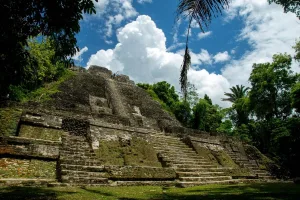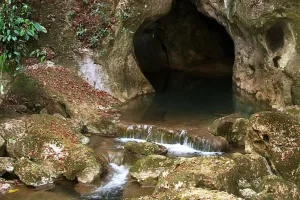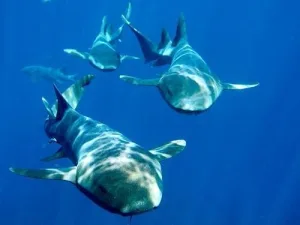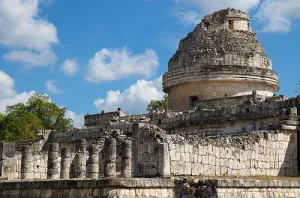Recognized as one of the world’s top diving sites, and part of the Belize Barrier Reef UNESCO World Heritage Site, this stunning, deep blue circular sinkhole is located on the Lighthouse Reef atoll. About 1,000 feet (305 meters) in diameter over 400 feet (122 meters) deep, the Great Blue Hole is a unique geographic phenomenon.
The structure of Great Blue Hole was created centuries ago, when a dry, above-sea-level cave collapsed. After the Ice Age, the area filled with water, and now divers can swim through the cave’s gigantic stalactite and stalagmite formations. Jacques Cousteau visited the Hole in the early 1970s to study its formations and eventually made it famous.
Most tours to the Blue Hole depart from San Pedro, Caye Caulker, or Belize City, and the boat ride takes about 2 hours each way. If you’re not a diver, and don’t want to snorkel, you can book one of the scenic helicopter tours of the area, which typically depart from Belize City, and see the Blue Hole and the Belize Barrier Reef from above.
-
Diving the Blue Hole requires intermediate to advanced diving skills. Some dive shops require that you have completed 30 or more dives before you can attempt the Great Blue Hole.
-
Make sure your travel insurance covers diving to 130 feet (40 meters).
-
A school of Caribbean reef sharks circle the Hole at a depth of 120 feet (36.5 meters) and below.
-
Snorkelers can swim around the Hole and in the nearby reefs.
-
Book your tour in advance as trips can fill up quickly.
The Great Blue Hole is located about 43 miles (69 kilometers) off the coast of Belize, along the Lighthouse Reef. Several dive services in Belize City, San Pedro, and Caye Caulker offer trips out to the Hole, which depart in the morning.
You can dive in Belize year round, but the dry season (from April to June) is considered the best time to go because there is little to no rain and excellent visibility. This is also the peak season for tourists, so expect to encounter crowds at the Blue Hole.
In addition to the Blue Hole, the Lighthouse Reef also boasts two other dive and snorkeling sites: Half Moon Caye and the Aquarium. Trips to the Blue Hole typically include a stop at the Aquarium, where you’ll see fish like Bermuda chubs, sergeant majors, creole wrasse, and trumpet fish. At Half Moon Caye, you’ll spot neon yellow and blue sponges, giant barrel sponges, and black and lilac sea fans.
